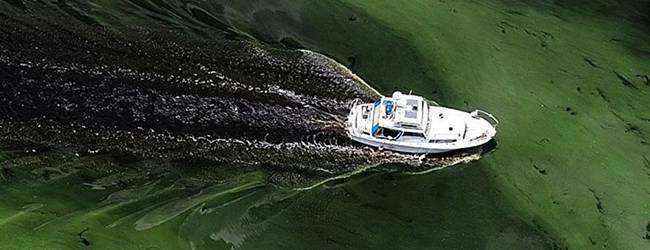FAU Harbor Branch at Frontline of HAB Research
Friday, May 21, 2021
As we enter the summer months — a time when we’ve historically seen an increase in harmful algal blooms (HABs) in southeast Florida’s waterways — FAU Harbor Branch scientists remain at the forefront of HAB research and understanding. HABs typically form in response to changing environmental parameters, often the result of human activities, and have toxic or other damaging effects on the environment, animals or people.
In 2018, the Harbor Branch Oceanographic Institute Foundation provided the support to establish the Florida Center for Coastal and Human Health. The Center’s objectives are to understand HAB drivers and dynamics, identify HAB community structure, assess ecosystem impacts, investigate human health impacts, and share information through public outreach. To date, the Harbor Branch Oceanographic Institute Foundation has awarded three grants totaling more than $2 million to conduct and share this critical research.
Researchers from FAU Harbor Branch and the Christine E. Lynn College of Nursing received a $319,976 grant from the Florida Department of Health to evaluate the short- and long-term health effects of exposure to HABs, expanding upon pilot a study conducted by FAU in 2018. In addition to gaining an understanding of the risks associated with exposure, which can guide efforts to reduce the occurrence and distribution of the blooms, this study also will provide a preliminary exploration of a potential increased toxin susceptibility in individuals who have been infected with the COVID-19 virus.
Scientists also are sharing data on a new web portal hosted by Gulf of Mexico Coastal Ocean Observing System that will provide the public with the latest research findings from the Harmful Algal Bloom Assessment of Lake Okeechobee (HALO) project. FAU Harbor Branch scientists received a $2.2 million grant from the Florida Department of Environmental Protection to provide water quality monitoring of Lake Okeechobee. Data gathered will help our understanding of the causes of the blooms and toxin generation, their impact on human health, and possible options for future mitigation efforts. The site is live and accessible to the public at Halo.gcoos.org.
For more information about the Florida Center for Coastal and Human Health, and FAU Harbor Branch’s HAB research, visit www.fau.edu/hboi/flcchh.